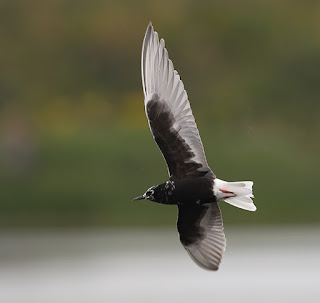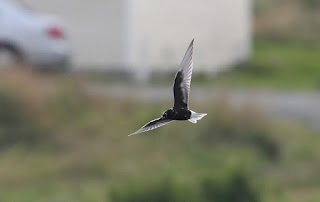A report of a Piping Plover on the side of the road at Cape Spear of course lead to skepticism on my part. Could it be a Snowy Plover? What about a Greater Sand Plover? Or maybe a Mountain Plover? Although these have never been recorded in the province they sounded somewhat more realistic than a Piping Plover on the side of road on the Avalon Peninsula at the end of August. A few dozen Piping Plovers nest in the southwest corner of the province from Burgeo around the corner at Port-aux Basques and up to Stephenville. There is an outpost pair at Shallow Bay GMNP and still occasional sightings from a former nesting location near Cape Freels. Piping Plover is accidental on the Avalon Peninsula. In the past three decades I can think of only two records - one from Bellevue Beach and a female that Richard Thomas found at Portugal Cove South one May not long ago and that one was seen by a number of people. Piping Plovers are also early departers from the stronghold breeding sites in Nova Scotia. I believe they are all gone before the end of August.
What was one doing on the side of the Cape Spear road on a busy Sunday on 30 August? It must have been very lost and disoriented. It fed on the gravel shoulder next to the pavement with constant cars and loud motorcycles passing within a meter or two. Semipalmated Plovers which regularly frequent the parking lot and Cape Spear grounds are typically wary of vehicles. It seemed physically healthy and appeared to be finding lots to eat. I saw it eat a couple of large insects but most of the time one could not see what, if anything, it got every time it picked at the ground.
Where did it come from? This was one time when I wished there were a few leg bands burdening the plovers life and blemishing the look of the beautiful bird so we could find out where it was hatched.
The viewing and photo opportunities were exceptional. I sat in my car on the opposite side of the road and fired away. There was hardly enough room to get the car off the pavement. Had to be careful to draw my lens inside the car so passing cars would not bang into it.
It frequently picked at the ground in plover fashion but could not see what it was getting.
Stomp out Smoking
Near sun set the plover slowed down and tried to rest on the edge of the road but was continually disturbed by passing cars yet never moved more than two meters back from the road edge.















































